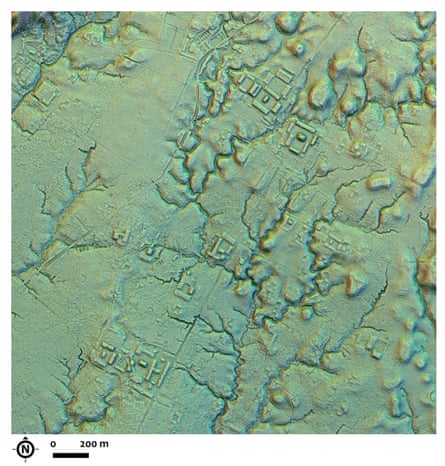A group of archaeologists has discovered a collection of abandoned cities in the Amazon rainforest which were inhabited by approximately 10,000 farmers around 2,000 years ago.
An archaeologist named Stéphen Rostain discovered a collection of earthen mounds and underground roads in Ecuador over twenty years ago. However, Rostain was initially unsure of their connection. In a recent publication in the journal Science, Rostain and fellow researchers shared their findings.
Newly created maps using laser sensors have uncovered that these locations are included in a concentrated system of communities and connecting roads, nestled in the forested slopes of the Andes, that existed for approximately 1,000 years.
According to Rostain, who leads investigations at France’s National Center for Scientific Research, it was a valley of forgotten cities. The discovery is astonishing.
The researchers discovered that the Upano people inhabited the settlements between 500BC and AD300 to 600, which coincided with the time of the Roman empire in Europe.
Homes and buildings used for ceremonies were built on over 6,000 mounds made of earth. These were surrounded by fields used for farming, which had drainage canals. The main roads were 33 feet wide and extended for distances of 6-12 miles.
According to archaeologist Antoine Dorison, who co-authored a study at the French institute, the site is believed to have housed a population of 10,000 to 15,000 or even as many as 30,000 at its height. This is similar to the population of Roman-era London, which was the largest city in Britain at the time.

According to Michael Heckenberger, an archaeologist from the University of Florida who was not part of the study, this demonstrates a highly concentrated population and a highly complex society. He also noted that compared to other regions, it stands out for its early development.
Archaeologist José Iriarte from the University of Exeter stated that constructing the roads and earthen mounds would have demanded a complex network of coordinated labor.
According to Iriarte, the Incas and Mayans used stone for their constructions, but those living in Amazonia had limited access to stone and therefore utilized mud as a building material. This required a significant amount of effort, as noted by Iriarte, who was not involved in the study.
According to the speaker, the Amazon has long been perceived as an untouched natural landscape with minimal human presence. However, recent findings have revealed a far more intricate history.
Scientists have recently discovered proof of complex rainforest civilizations that existed before Europeans made contact, in other parts of the Amazon such as Bolivia and Brazil.
Rostain stated that the Amazon has always had a vast array of individuals and communities, and there is not just one way of life. They are continuously gaining knowledge about these groups.
Source: theguardian.com


